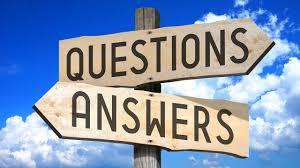How is India balancing its relationships with major powers like the United States, China, and Russia? By Hugo Keji

India’s foreign policy is characterized by a strategic approach often described as "multi-alignment," where it seeks to maintain balanced relationships with major global powers, including the United States, China, and Russia. Here’s how India is managing these complex relationships:
1. India and the United States:
- Strategic Partnership: India’s relationship with the United States has significantly deepened, especially in the past two decades. The two countries share strategic interests in countering China’s influence in the Indo-Pacific, enhancing defense cooperation, and promoting a rules-based international order. This partnership is exemplified by the Quadrilateral Security Dialogue (Quad) and defense agreements like the Logistics Exchange Memorandum of Agreement (LEMOA) and the Communications Compatibility and Security Agreement (COMCASA).
- Economic and Technological Cooperation: The U.S. is one of India’s largest trading partners, and both countries collaborate on technology, innovation, and energy. Recent agreements on semiconductor supply chains and clean energy further strengthen economic ties.
- Diplomatic Balancing: While aligning closely with the U.S., India maintains its strategic autonomy. For instance, India has refrained from joining U.S.-led sanctions on Russia post-Ukraine invasion, highlighting its independent foreign policy.
2. India and China:
- Competitive Coexistence: The India-China relationship is complex, marked by both cooperation and competition. While the two countries have extensive trade relations, tensions persist, particularly over the long-standing border disputes in the Himalayas. The 2020 Galwan Valley clash was a significant point of contention, leading to a deterioration in relations.
- Diplomatic Engagement: Despite these tensions, India continues to engage with China diplomatically, participating in platforms like BRICS and the Shanghai Cooperation Organisation (SCO). India advocates for peaceful resolution of disputes and emphasizes the importance of a balanced, rules-based international order.
- Economic Relations: China is one of India’s largest trading partners, though India is increasingly wary of economic dependence on China. This has led to efforts to diversify trade and reduce reliance on Chinese imports, particularly in critical sectors like technology and pharmaceuticals.
3. India and Russia:
- Historical Ties: India’s relationship with Russia is rooted in historical ties dating back to the Cold War. Russia remains a key defense partner, supplying a significant portion of India’s military equipment. The two countries also collaborate in areas like nuclear energy, space, and oil and gas.
- Balancing Act: While India values its relationship with Russia, it has sought to balance this with its growing ties with the U.S. and its concerns about Russia’s increasing alignment with China. India’s stance on the Ukraine conflict, where it has avoided outright condemnation of Russia, reflects its desire to maintain a neutral position that preserves its strategic relationship with Moscow.
- Economic Engagement: Despite Western sanctions on Russia, India has continued to engage economically with Russia, particularly in the energy sector. India has increased its purchase of Russian oil at discounted rates, which aligns with its energy security needs.
AfriPrime App link: FREE to download...
https://www.amazon.com/Africircle-AfriPrime/dp/B0D2M3F2JT
4. Strategic Autonomy and Non-Aligned Approach:
- Multi-Alignment: India’s foreign policy is guided by the principle of strategic autonomy, allowing it to engage with multiple global powers without being tied to any single bloc. This multi-alignment approach is evident in India’s participation in diverse groupings like the Quad, BRICS, and SCO.
- Non-Alignment 2.0: India’s approach can be seen as a modern version of its Cold War-era non-aligned policy, where it seeks to avoid being caught in the crossfire of great power rivalry. This allows India to pursue its national interests while maintaining good relations with all major powers.
5. Navigating Global Complexities:
- Indo-Pacific Strategy: India’s role in the Indo-Pacific is central to its balancing act. While cooperating closely with the U.S. and its allies in this region, India avoids actions that could be perceived as directly antagonistic to China, advocating for an inclusive Indo-Pacific.
- Global South Leadership: India also positions itself as a leader of the Global South, advocating for the interests of developing countries in global forums. This helps India maintain a distinct identity on the global stage, separate from the agendas of major powers.
6. Economic Diplomacy:
- Diversifying Trade and Investments: India is actively working to diversify its trade relations and reduce over-dependence on any single country. This includes negotiating free trade agreements (FTAs) with the European Union, the UK, and Australia, and enhancing economic ties with Southeast Asian nations.
India’s balancing act involves maintaining strategic autonomy, deepening partnerships with key global powers, and pursuing a multi-aligned approach that allows it to navigate the complex and shifting dynamics of international geopolitics.
AfriPrime App link: FREE to download...
Sponsored
Search
Sponsored
Categories
- Questions and Answers
- Opinion
- Motivational and Inspiring Story
- Technology
- Live and Let live
- Focus
- Geopolitics
- Military-Arms/Equipment
- Security
- Economy
- Beasts of Nations
- Machine Tools-The “Mother Industry”
- Art
- Causes
- Crafts
- Dance
- Drinks
- Film/Movie
- Fitness
- Food
- Games
- Gardening
- Health
- Home
- Literature
- Music
- Networking
- Other
- Party
- Religion
- Shopping
- Sports
- Theater
- Health and Wellness
- News
- Culture
Read More
How to Get HRD Attestation in Delhi?
In today's globalised world, educational and professional opportunities often extend beyond...
M3M Crown 111
M3M Crown is a new definition of a Premium Lifestyle bang on Dwarka Expressway. This ultra-luxury...
How Elite Construction Solutions Stays Ahead in a Competitive Market
In today’s fast-paced and highly competitive construction industry, only a few...
Small Pupils: Is It Something to Worry About?
Seeing changes in your eyes can be unsettling. If you’ve noticed small pupils, you might...
Children face lethal violence, rape in east Congo war
As Rwanda-backed rebels closed in on eastern Congo's largest city, retreating army soldiers...
Sponsored

